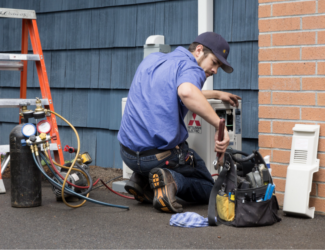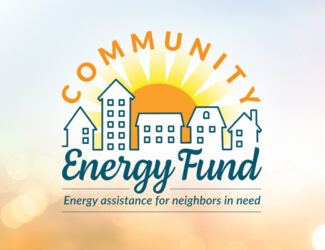
Bonneville Power Administration
The Bonneville Power Administration (BPA), headquartered in Portland, Oregon, is an agency of the federal government (part of the U.S. Department of Energy) that was created by Congress in 1937 to market the electricity generated by Bonneville and Grand Coulee dams. Today, the agency sells the power from 31 federal dams and one nuclear power plant. It supplies about half of the electricity used in the Northwest and operates more than three-quarters of the region’s high voltage transmission lines. BPA also is responsible for implementing a regional conservation plan as well as regional fish and wildlife programs.
While BPA is part of the Department of Energy, it is not supported through taxes. It recovers all of its costs through sales of electricity and transmission, repaying the U.S. Treasury in full with interest for any borrowed funds.
In order to market power, BPA has built the nation’s largest network of long-distance, high-voltage transmission lines, which serves as the main power grid for Washington, Oregon, Idaho, and western Montana. Consequently, just about every person, home, and business in the Pacific Northwest relies on BPA in some form.
The PUD purchases about 80 percent of its power from the BPA.
View our current energy resource mix
BPA sells wholesale electricity to 149 customers, which includes public and private utilities and some large industries, mostly aluminum factories. Snohomish County PUD purchases more electricity from BPA than any other of its utility customers.
BPA Residential Exchange Credit
The Residential Exchange Program or “REP” is administered by the Bonneville Power Administration (BPA). The intent of this program is to provide residential and small farm customers of Pacific Northwest utilities with access to low-cost federal power. When BPA determines that a utility qualifies for the program, then certain utility customers are automatically enrolled and receive financial benefits from BPA. The PUD passes along this monthly BPA REP benefit to a specific group of its customers as a rate credit on their monthly power bills. This credit offsets BPA power costs and helps keep rates stable for residential customers.
Who is eligible to receive BPA REP benefits? If you are a PUD customer on the Schedule 7 Residential Rate Schedule and have lived at your address since October 1, 2009, you have likely received the BPA Residential Exchange Program benefit. You can also check your monthly PUD statement. At the top of the statement, the PUD notes a BPA REP rate credit.
What is the average amount of the BPA REP rate credit? The BPA REP rate credit is allocated to the customers under the PUD Schedule 7 Residential Rate. For more information, click here to visit our Electric Rates page.
When does the BPA REP benefits expire? The PUD has received REP benefits for its eligible customers on the Schedule 7 Residential Rate since October 1, 2009. BPA conducts a review every two years. At this time REP benefits will run through September 30, 2023.






